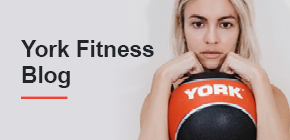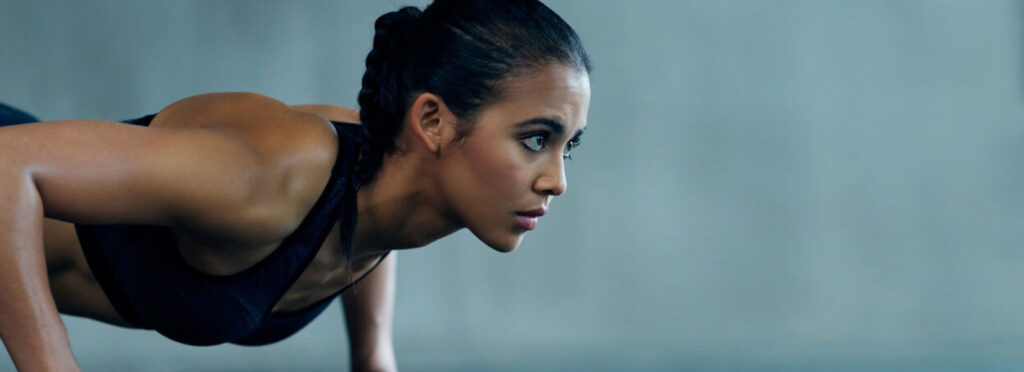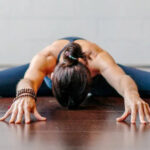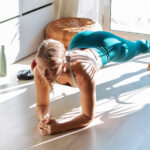
The Best Strength-Training Exercises for Beginners to Get Stronger

When it comes to strength training for beginners, it’s important to know that you don’t need to do anything fancy to get strong. All it takes are some fundamental moves, consistency, and patience.
When you first start strength training, the exercises can feel hard—which might have you scrambling to figure out how to build muscle ASAP so your workouts don’t feel like punishment. After all, if every move is a struggle, it can be tough to motivate yourself to even start a workout routine, let alone give it a solid effort.
The key to creating an effective and enjoyable strength-training routine is starting with a solid foundation of exercises that work each part of your body. If you focus mostly on this handful of staple moves, you’ll notice that they’ll start to feel easier with time. That’s you getting stronger (heck, yeah!). And once that happens, you can start progressing the moves by using heavier or different weights, trying advanced variations, or experimenting with completely new exercises altogether.
If you want to get stronger but don’t know where to start, we have you covered—from traps to calves. Below are some impressive benefits of building muscle, along with fundamental exercises that every beginner strength-training program (even a totally unofficial one) should include.
What are the benefits of strength training for beginners?
Building strength doesn’t just help you in your workouts—it can make day-to-day life easier too.
“Resistance training, whether it’s moving your body weight or external weights, is a great way to help your body stay functional and healthy in the long run,” Sivan Fagan, an ACE-certified personal trainer and owner of Strong With Sivan in Baltimore, tells SELF.
Increasing muscle strength can help make everyday movements less of a struggle, whether you’re carrying a week’s worth of groceries up the stairs, placing a bulky object on an overhead shelf, or simply getting up off the floor. And building balanced strength—by making sure you’re focusing on all muscle groups—is important because it helps prevent weaker muscles from overcompensating, which can lead to injury.
As you get older, maintaining muscle mass and strength becomes even more important for overall health. Resistance training can help older adults improve balance, build bone density, reduce the risk of falls, preserve independence, and even boost cognitive well-being, according to a 2019 position paper from the National Strength and Conditioning Association.
More good news: You don’t have to work out constantly to gain muscle. A 2016 research review in the journal Sports Medicine suggests that strength training twice per week is enough to significantly increase muscle mass.
How to train to get stronger
The key to getting stronger is focusing on compound movements, which involve multiple joints of the body and, therefore, multiple muscles working at the same time.
“Multi-joint, compound movements employ the most muscle fibers,” Jeffrey Yellin, DPT, CSCS, tells SELF. Examples of multi-joint exercises include squats, which involve the hip and knee joints and work the glutes, legs, and core; and push-ups, which use your elbow, wrist, and shoulder joints and work the chest, arms, and core muscles.
Another essential factor for a quality weight-lifting workout is including a mix of pushing and pulling exercises. “Balancing your routine with pushing and pulling ensures that you maintain good muscular balance and hit all the important muscle groups,” Yellin adds.
For example, rows—a pulling motion—recruit your back and biceps muscles. A chest press hits the pectoral muscles (chest muscles) and triceps. If you were to skip the pulling motion and only do the chest presses, you’d be at greater risk for injury over time due to uneven pulling on the joints, Yellin explains.
Some other examples of pushing exercises include squats, standing overhead presses, push-ups, dips, bench presses, barbell box step-ups, and glute bridges. Common pulling exercises include rows, pull-ups, and lat pull-downs.
Reps and sets for beginner strength training
In general, the recommendation for building strength is to use a weight you can lift for about 6 reps per set with proper form. If you’re just getting started, though, focus on a weight you can lift for a range of 6 to 12 reps, since lifting too heavy before you’re comfortable with the moves can increase your risk of injury, says Fagan.
Give yourself 2 to 5 minutes of rest between sets to allow sufficient recovery for your nervous system and muscles—otherwise you won’t be able to maximize your effort during the next set, says Yellin. This may sound like a lot of rest, but it’s actually fairly standard for a workout that’s focused specifically on gaining strength.
If you’re a beginner, perform 1 to 3 sets per exercise. As you become stronger, you can progress to 3 to 5 sets for each movement. Allow 48 hours of recovery (that is, no more heavy lifting for those muscle groups you worked) between workouts.
4 great beginner strength-training exercises
These exercises are ideal for beginners because they help you build strength and practice foundational moves upon which hundreds of other exercises are created. They’re all considered functional, meaning they help you get stronger by performing movements you do in everyday life, not just in the gym. Mastering these moves first—and building a rock-solid base of strength and proper form—will translate to better proficiency and strength gains down the road.
1. Squat
One of the purest tests of strength, the squat incorporates almost all of the muscles in your legs and core, says Yellin. The GIF above shows a bodyweight squat, which is a good way to nail down your form. Once your form is solid, you can add weight by holding dumbbells or a bar in front of your shoulders (front squat), resting a barbell on your back (back squat), or holding a weight in front of you at your chest (goblet squat).
- Stand with your feet slightly wider than hip-width apart.
- Lower your hips into a squat as you bend your knees and keep your back flat.
- Continue to lower yourself until your thighs are parallel to the floor.
- Push into the floor through your heels to return to start.
- Keep your heels flat and knees aligned with your second toe so they don’t cave in.
2. Deadlift
Deadlifts are considered hands-down one of the best exercises to train the backside of your body, namely your glutes and hamstrings. And because you’re working from a stable base, you can really load up the weight on these. There are a bunch of different varieties of deadlifts, like the Romanian (as pictured above, where you lower the weight as you hip hinge), traditional barbell (where you pull the weight from the floor), and sumo (with a wider stance and toes pointing out at about a 45-degree angle.)
- Stand with your feet hip-width apart, knees slightly bent, and arms relaxed by the front of your quads, with a dumbbell in each hand. This is the starting position.
- Hinge forward at your hips and bend your knees slightly as you push your butt way back. Keeping your back flat, slowly lower the weight along your shins. Your torso should be almost parallel to the floor.
- Keeping your core engaged, push through your heels to stand up straight and return to the starting position. Keep the weight close to your shins as you pull up.
- Pause at the top and squeeze your butt.
3. Glute Bridge
Glute bridges (also called hip bridges) target one of the largest muscles in the lower body—the glutes, says Yellin. They also contribute to building leg strength and core stabilization.
- Lie on your back with your knees bent and feet flat on the floor, hip-width apart. Hold a dumbbell in each hand and rest the weights right under your hip bones. This is the starting position.
- Squeeze your glutes and abs, and push through your heels to lift your hips a few inches off the floor, until your body forms a straight line from your shoulders to your knees.
- Hold for a second and then slowly lower your hips to return to the starting position.
4. Push-Up
Being able to move your own body weight is one of the best signs of strength, says Fagan. If a regular push-up from the floor is too challenging at first, you can modify it by elevating your hands on a step or a table—the higher your hands, the easier it will be.
- Start in a high plank with your palms flat on the floor, hands shoulder-width apart, shoulders stacked directly above your wrists, legs extended behind you, and core and glutes engaged.
- Bend your elbows and lower your body to the floor. Drop to your knees if needed.
- Push through the palms of your hands to straighten your arms.
Credit: https://www.self.com/story/8-strength-exercises
Align your low intensity beginner friendly workouts with York Fitness treadmills or cross trainers. Bag yourself a bargain & smash your fitness goals 🙂







